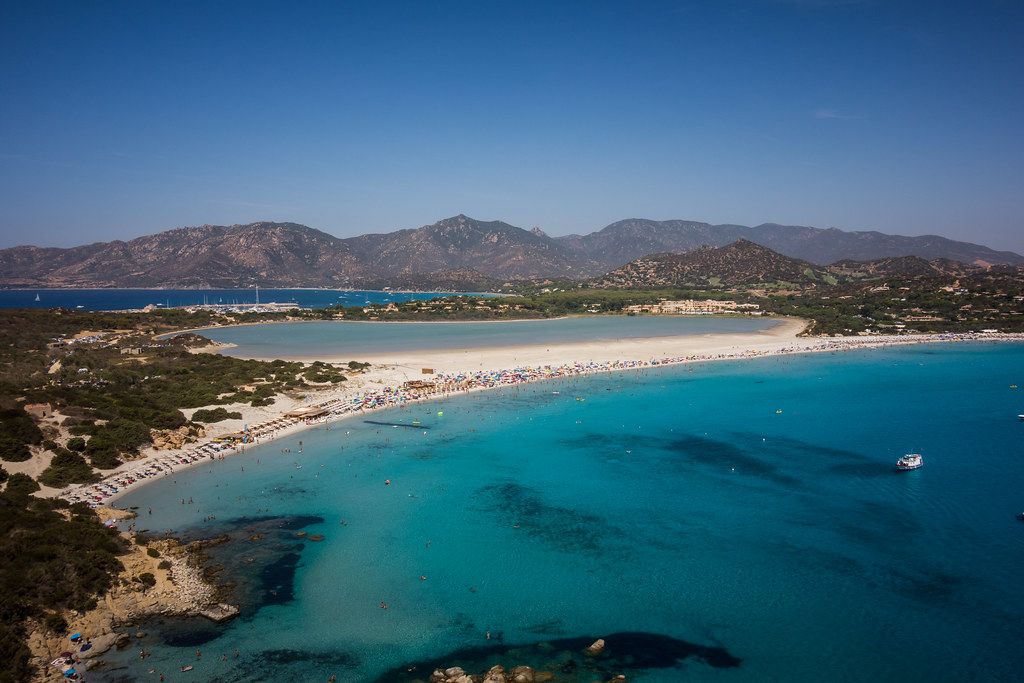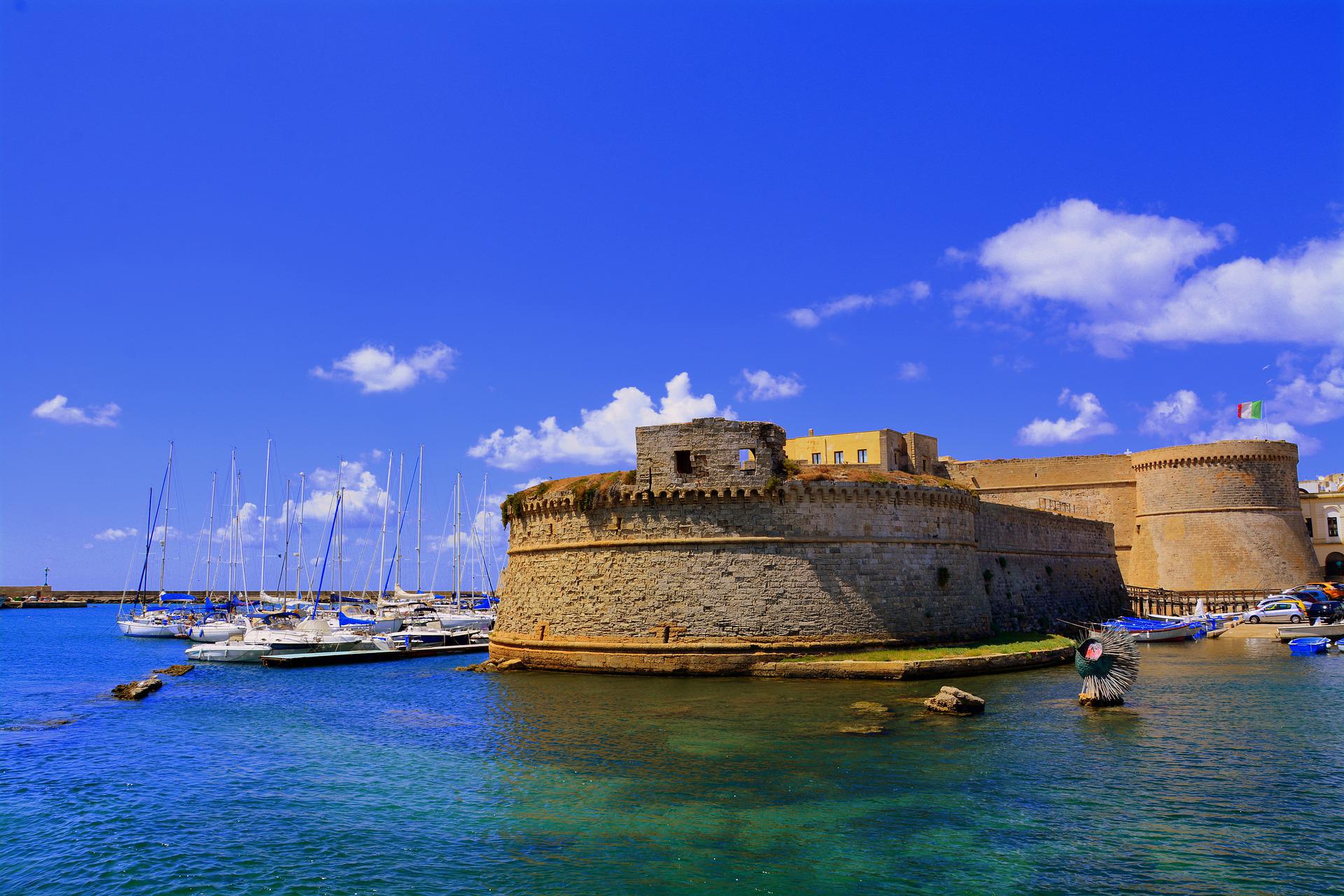It is from the extreme eastern edge of Italy, from that strip of land squeezed between the Adriatic Sea and the mountains that is the province of Trieste, that one of the richest itineraries of natural scenery of the Peninsula starts. From the lands of Trieste to the heart of the Venetian Lagoon is an alternation of landscapes as different as spectacular, often surprising places, sometimes unique.
From the Julian coast to the Venice lagoon
Our itinerary to discover the northern Adriatic coast starts from the outskirts of Trieste, from the picturesque Muggia, to continue in the capital, to discover its historical and architectural beauties.
Then there are the seaside castles of Miramare and Duino, Aquileia and Lignano Sabbiadoro, the main stages before crossing the border with Veneto, where Caorle, Jesolo and the splendid Venice are the unmissable stops.
Day 1: Muggia and Trieste
After completing the recharge at the Plenitude+ Be Charge column in San Dorigo della Valle, we reach the beautiful village of Muggia, a characteristic town overlooking its bay. From architecture to dialect, from customs to gastronomic traditions, in Muggia you can breathe the Venetian atmosphere. It is the bright colors of the houses to take the scene of this village full of charm a stone’s throw from Trieste, linked to the Republic of Venice between the beginning of the fifteenth century and the end of the eighteenth.
Precisely this link to the Serenissima gives Muggia Venetian suggestions. From the fourteenth-century castle to the Archaeological Park of Muggia Vecchia, with the church of Santa Maria Assunta inside, with three naves, decorated with a double cycle of Byzantine frescoes dating back to the period between the fourteenth and fifteenth centuries, join the picturesque historic center to which we dedicate a walk.
Among colorful facades, shops and coves, we are in the heart of the village, in Piazza Marconi, overlooked by the Town Hall and the cathedral, with a Venetian Gothic façade. We close the walk at the picturesque marina, before leaving Muggia to reach nearby Trieste.
The first approach with Trieste is at the table for lunch. It is the Trieste goulash, a hearty dish based on beef stew with potatoes, to give us the right energy to face the visit of the city. Nestled between its gulf and a beautiful hilly setting, Trieste has always been an important center of commercial and cultural exchange between the Adriatic, the Balkans and the Germanic world.
It is an exciting alternation of picturesque places, ranging from the Grand Canal, the vital heart of the Borgo Teresiano, to Piazza Unità d’Italia, the authentic living room of the city. The latter is one of the main stages of the walk to discover the capital of Friuli-Venezia Giulia. In the square you can breathe the most refined essence of the city, where the whiteness of the buildings seems to illuminate the premises and the shops that dot it, in which converge the alleys that run from the old city to the sea.
From the Town Hall building and its imposing eclectic façade (with the clock tower with the two bronze Moors) to Palazzo Modello, enriched by numerous floral decorations, passing through Palazzo Stratti, a neoclassical jewel, to the Palazzo del Governo, with the balcony embellished with Murano glass mosaics, up to the Palazzo della Regione, the square is really a riot of art that strikes.
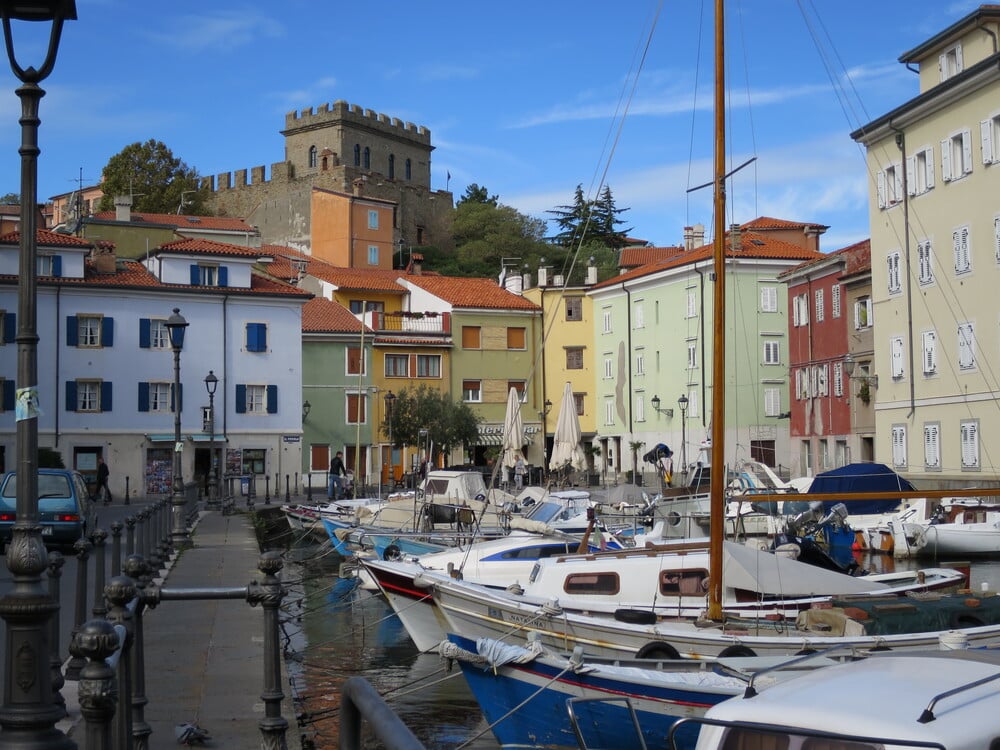
After the unmissable stop at the fountain of the Four Continents, a stop at the historic Caffè degli Specchi, founded in 1839 and the only survivor of the four cafes that once enriched what was once called Piazza Grande, which gives the atmosphere of the Habsburg Empire inside. The Caffè is one of the historic places in Italy: it was a destination for writers and famous people including Svevo and Joyce.
We treat ourselves to a coffee and a taste of its refined chocolate before leaving to discover the city, which takes us through the alleys of the center, between shops and shops, until we reach the scenic Grand Canal, the heart of the Borgo Teresiano, among the most picturesque areas of the city, where the church of Sant’Antonio Taumaturgo is also worth seeing.
Not to be missed in the city, among the many buildings of worship, the cathedral of San Giusto, located on the homonymous hill overlooking the city and the main Catholic religious building of Trieste, and, among the many historic buildings, the sumptuous Palazzo delle Poste, built between 1890 and 1894.
Among the many interesting museums in the city we have chosen the Revoltella Museum, a modern art gallery that offers a rich collection of works by authors such as Morandi, Carrà, Casorati, Manzù and De Chirico.
For dinner we treat ourselves to a seafood salad and a fried sardoni, which we accompany with a fresh white of the Friulian lands. Beautiful Trieste in the evening, which we enjoy with a walk before returning to the hotel.
Day 2: Miramare Castle and Aquileia
We leave Trieste to reach the nearby castle of Miramare. Princely residence overlooking the sea, which was the residence of Maximilian of Habsburg-Lorraine, brother of Emperor Franz Joseph. A place of great charm on the Adriatic coast, where the splendor and elegance of the internal rooms of the castle combine the enchanting gardens, the English, the botanical and the Italian.
We close the morning at the nearby village of Duino, one of the most evocative places in the region from where you can enjoy an extraordinary view of the coast. Located on a rocky outcrop overlooking the sea, Duino is embellished by the castle of the princes Torre-Hofer Valsassina, a residence frequented by artists, writers and intellectuals, who lived the period of maximum splendor at the end of the nineteenth century. Seafood lunch with a fried seafood with a drop of Vitovska, a local white wine.
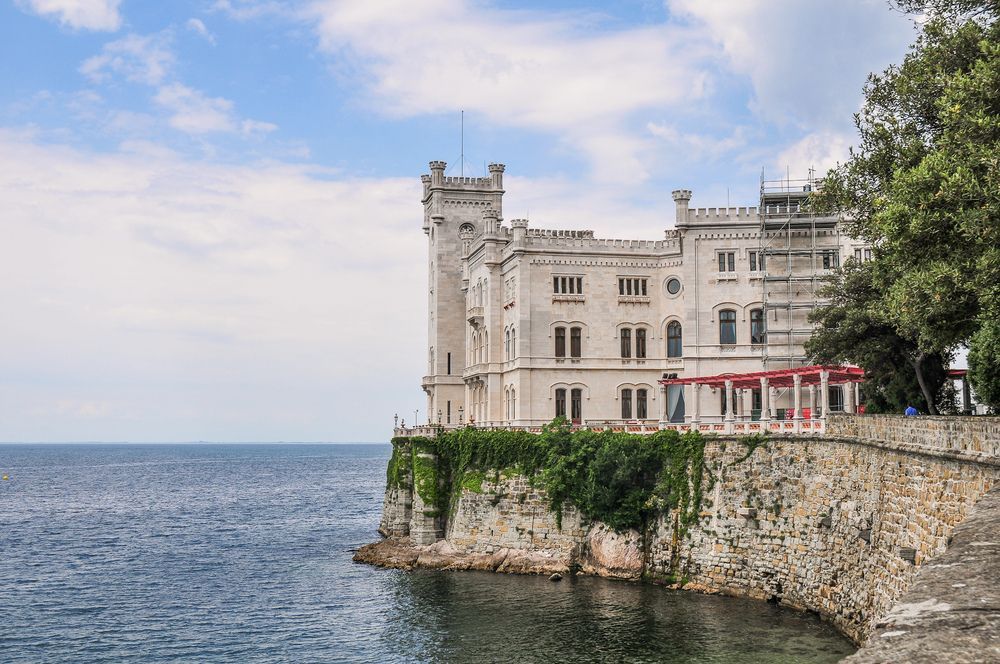
In the afternoon we move a few kilometers and reach Aquileia, founded at the behest of the Senate of Rome in 181 BC as a colony to defend the eastern border. Aquileia isa rich and thriving city, and its wealth is perceived by visiting it. Do not miss its archaeological area, one of the most important sites in the world, a World Heritage Site since 1998.
Aquileia is also its extraordinary Patriarchal Basilica, among the most important monuments to Christianity. From the interior with three naves, it presents, among the many points of particular interest, an enchanting mosaic floor dating back to the fourth century, a wooden ceiling of 1526 and frescoes from various eras.
At the end of a day full of wonders and extraordinary places we treat ourselves to a hearty dinner: a good pasta dish with game sauce, followed by the typical herbal omelette and apple strudel. And then, to close great, not having to drive, we treat ourselves to a small glass of aged grappa, one of the many treasures produced in this borderland.
Day 3: Palmanova, Lignano Sabbiadoro and Caorle
A few kilometers from Aquileia there is Palmanova, one of the jewels of the lands of Udine. Fortress city with a nine-pointed stellar plan, it has in the center the Piazza Grande, hexagonal in shape and very wide. Palmanova is to be enjoyed on foot, letting yourself be guided by its streets, visiting its imposing ramparts, must open the monumental gates Cividale, Udine and Aquileia, and its historic buildings including the cathedral, with a white façade in white stone of Orsiera and gray stone of Aurisina, and the typical Venetian palaces that open onto the wide streets of the city, the Loggia dedicated to the fallen and the Palace of the Provveditori Generali.
We leave Palmanova to reach Lignano Sabbiadoro, the capital of seaside tourism in the region. A walk along the seafront is combined with a boat ride in the Lagoon of Marano, an area of great naturalistic charm thanks to the exceptional presence of birds, with geese, herons, royal swans, terns and gulls, and fish, with octopus molluscs, cuttlefish, squid and rays.
A unique landscape that lagoon, which offers enchanting scenery a stone’s throw from the lively center of Lignano Sabbiadoro, full of shops, shops and clubs. Lunch in one of the many restaurants in the center of Lignano with a plate of spaghetti with mussels and a lemon sorbet.
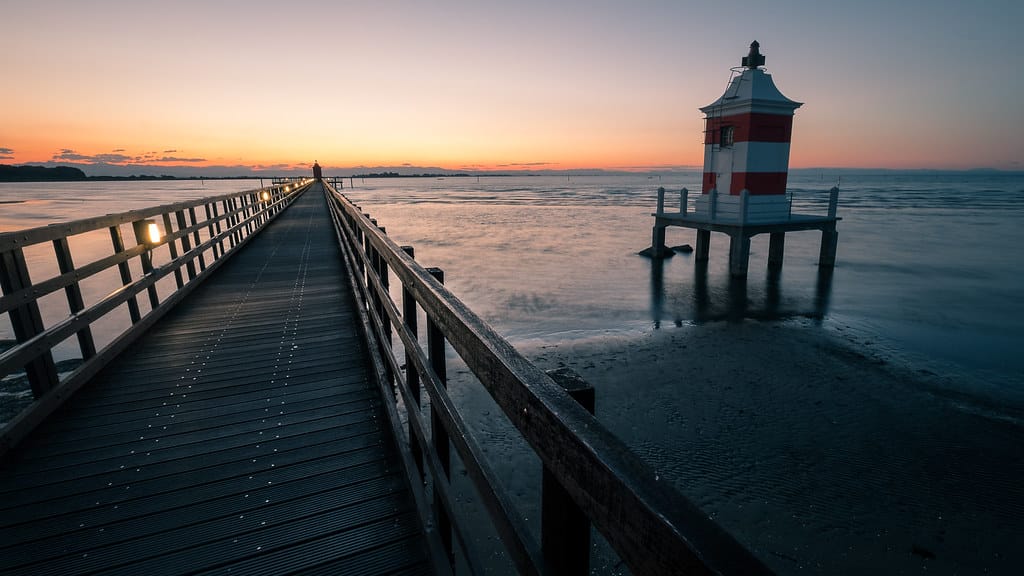
In the afternoon we leave for Caorle. We walk along the great plain bathed by the tagliamento river and here we are in Veneto. From San Stino di Livenza we head towards the sea. Here we are in Caorle, the ancient Caprulae, once an island and today linked to the mainland for the burial of the lagoon.
Picturesque the historic village, with colorful houses and shops. Do not miss the fishing port, the sanctuary of the Madonna dell’Angelo, the cathedral, the characteristic medieval bell tower and the scenic promenade.
The scent of fried fish that spreads in its alleys is irresistible and for dinner we sit in one of its restaurants to give us a fried shrimp and squid that we accompany with a fresh Friulian white wine. We spend the evening walking through the beautiful streets of the village between lights and sea views.
Day 4: Jesolo and Venice
We leave Caorle, one of the most sought-after seaside destinations in Veneto, to reach another, Lido di Jesolo. After more than two hundred kilometers we leave the car in charge at the column of Via XIII Martiri and continue on foot towards the beaches.
A morning at sea awaits us in one of the most important seaside destinations in Italy with 15 kilometers of beach, hundreds of kilometers of cycle paths and hundreds of clubs. After the rich meals of the previous days, for lunch we give ourselves only, so to speak, a mega fruit ice cream, before recovering the car and leaving for the last stage of the journey, the splendid Venice.
After an hour’s drive here we are in Venice. Leaving the car at the multi-storey at the entrance of the city, we embark on the vaporetto towards Piazza San Marco. Among the most beautiful squares in the world, it is the beating heart of Venice, an authentic triumph of art and culture, the only town square overlooking the sea.
The enchantment is total at the sight of the Doge’s Palace, erected in the fifteenth century with Istrian marble, of the bell tower of San Marco, 98 meters high, and of the Basilica of San Marco, with a façade that appears as an immense polyptych, with columns, arches, pinnacles and many other details, to which is added the extraordinary mosaic decoration of the internal vaults, and domes; the polychrome mosaics that cover the floor are also splendid.
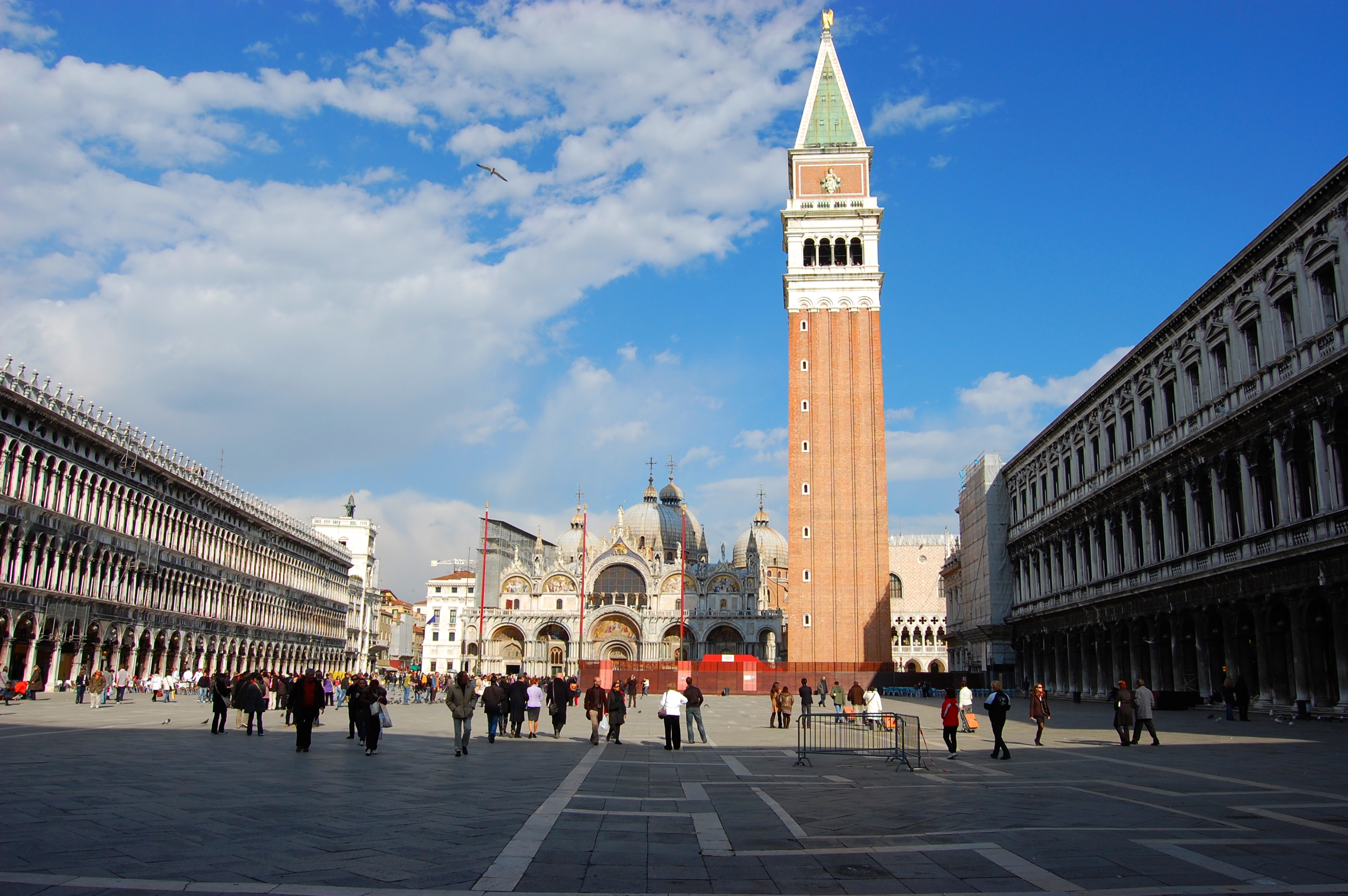
St. Mark’s Square is an open-air museum that never ceases to amaze and that is completed with the beautiful Clock Tower, with on the façade the sculptures of the Lion of San Marco, the statues of the Moors, who beat the hours, the bell, the clock and the figures of the Magi, while in the lower part there is the arch of the Mercerie, the street full of shops that leads to Rialto.
Right in Rialto we head that dinner. Overlooking one of the most beautiful bridges in the world we enjoy one of the typical Venetian dishes, the sardines in saor, continuing with a plate of spaghetti with cuttlefish ink, to close with a tiramisu.
Day 5: Cannaregio and San Polo
Venice is definitely St. Mark’s Square and Rialto but it is also much more. The morning is dedicated to Cannaregio, the most populous sestiere. A walk in Strada Nova, one of the liveliest arteries of the city, takes us to the most evocative corners of the sestiere, between enchanting views and views of the canals, between artisan shops and architectural treasures, where you can not stop to make some purchases.
Lunch is with one of the typical dishes of the local cuisine, the Venetian liver, veal, cooked with white onions, which we combine with a good Venetian red wine, the Vicenza Breganze Cabernet Sauvignon.

CannaregioAmong picturesque streets and squares, the San Polo district is connected to that of San Marco through the Rialto Bridge, the geographical heart of the Venetian capital, which overlooks the busy Grand Canal. Do not miss San Polo the church of San Giacomo, built in 421 and considered the oldest in Venice, and the imposing basilica of Santa Maria Gloriosa dei Frari, with three naves and 17 monumental altars.
Grand finale with a gondola ride, a legendary Venetian boat, to enjoy the beauty of Venice from the waters, between silences, architectural wonders, enchanting views, bridges and lots of poetry.
Article by Luca Sartori for E-Borghi







